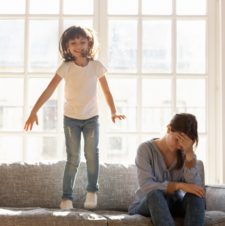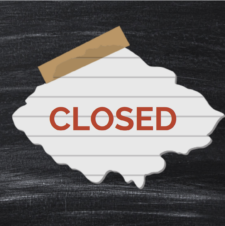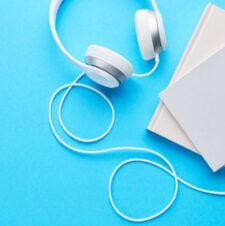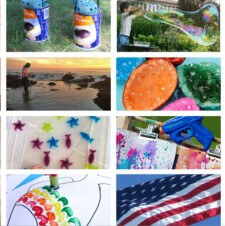Using Sign Language, Building Bridges by ASL Nook
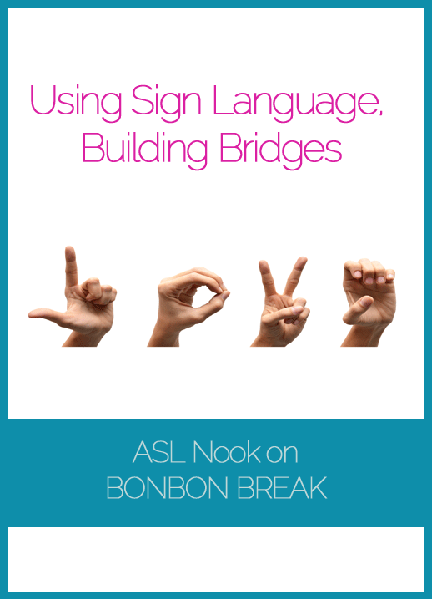
My boys and I recently curled up to read a library book that I had chosen because it combined a picture book (preschool-friendly) with a story about being outdoors (hitting my first grader’s passion for all things nature). I didn’t realize it was also a book about a boy who happens to be Deaf, and soon the boys and I were talking about things like hearing aids and lip-reading and sign language. It is easy for many of us in the hearing world to go through life with minimal understanding of what it is like to be Deaf, so I was happy to stumble upon a story that introduced my boys to a kid who communicates in a different language, but enjoys the same things they do.
And here on BonBon Break, Sheena McFeely of ASL Nook graciously shares her story with us about what it was like growing up Deaf and the powerful role that American Sign Language (ASL) played in her life. Sheena has a fabulous video-based website that introduces ASL in a fun and accessible format, providing a great resource for introducing ASL to your own children, whether they are Deaf or hearing.
Check out this clip from her site and then read her story below. ~Ellie, Editor of the Family Room
Home is where we learn a language…a language where our children smile and frown, use their finger to point at something that caught their attention, utter their first word, and write their full name with a crayon. In acquiring a language, we expand our intellectual capacity, connect with one another, and understand the depths of the culture that often comes with languages.
Born Deaf to a hearing family, my first language was English, spoken and written. At first it was easy. As a young child conversations were simple and easy to follow. One, two, three words strung together. I can easily communicate with my parents because I know them so well. When it came to family gatherings, we played kid games like tag or hide-n-seek where communication was not a priority.
But as I got older and enrolled into a school program, it became much more difficult to catch everything that was going on around me. The first school I attended encouraged us not to sign, fearing it would cause a delay to our primary language – English – and so I relied on reading lips. But people who are Deaf can only read lips to a point and in reality can only get a few words correct. In between, we use gestures such as pointing at things or making shapes out of specific objects. My eyes became so tired of reading lips and my brain was worn out due to guessing, filling in between lines. My parents realized I was not getting the best of the best so they enrolled me into a new program called TRIPOD, where signing was permitted.
As soon I was in TRIPOD, I was amazed by both my Deaf and hearing classmates signing away to me. I was in 5th grade at that point, and I felt so behind. There were new words I had never heard of before, but I was too embarrassed to let them know that. The teachers were smart enough to catch on and decided it was best for me to repeat fourth grade. I cried as if it was the end of the world, but looking back it was truly the best decision. My teachers knew I just needed a bit more time to catch up, not to mention learn a new language at the same time.
That year, I blossomed. Discovering ASL was like love at first sight for me. It offered greater depth to the ways I could express myself. As I was able to express my thoughts more fluidly and with a wider range of words, I came out of my shell. My confidence and my knowledge rose, and by the end of the school year I had become very outgoing. I saw the world differently. That year, ASL pretty much saved my life.
Yes, it also brought out the other side – those who weren’t willing to learn my language (ASL). Communication is a two way street. As an adult with my own Deaf daughter, we choose who we see and who we do not see. We have stopped keeping in touch family members who won’t put in the effort to learn ASL. They make excuses for why they are not learning our language. What they don’t understand is that once we share a common language we share a common bond. We learn more about each other, so much more. We learn what drives us to do certain things, what makes us passionate, what triggers our sad and angry moments, and more.
Fortunately, for every person in our lives who refuses to learn ASL, there is someone who goes out of their way to connect. As life went on, I married a Deaf man and gave birth to two darlings, one Deaf and one hearing. We interact with each other in ASL every day. While on-the-go with my girls, there were moments people told me they wished they knew more signs and moments that people stopped us to ask how to sign specific words to our children. There are wonderful moments, like when our neighbor surprised us by signing when we bumped into each other on the stairs.
As both neighbors and strangers made an effort to learn ASL, I quickly found that there aren’t many resources out there that are accurate, refreshing, and family-friendly. My experiences turned into a whole new endeavor, and ASL Nook was born. ASL Nook is a video-based website designed to make learning ASL fun. Families can take a few minutes out of their busy lives to share new signs with their little ones, Deaf and hearing. Visit us at ASLnook.com – you might just get hooked on ASL!
ABOUT SHEENA: Sheena McFeely hails from Hong Kong and lived in Ireland after. Shortly after her parents’ discovery of Sheena being Deaf, America called their names. Since then, Sheena has grown into a mom, advocate, and vlogger. While not vlogging at ASL Nook, you will find her snapping real moments of people, getting her Masters in Sign Language Education, and chasing her girls around.
Follow ASL Nook on Facebook and Twitter
CONTINUE READING IN THE FAMILY ROOM
![]()



